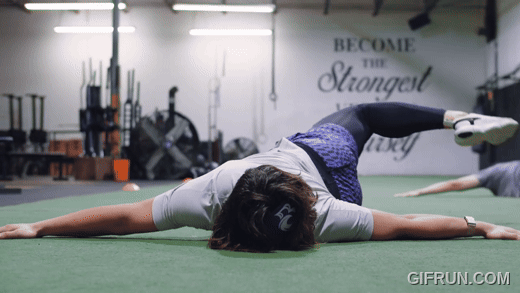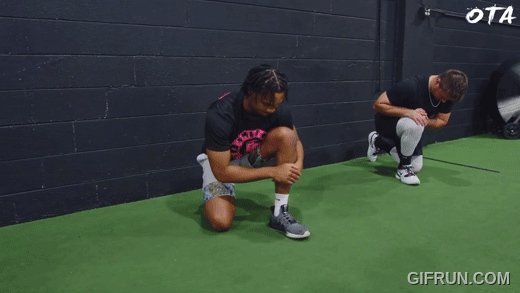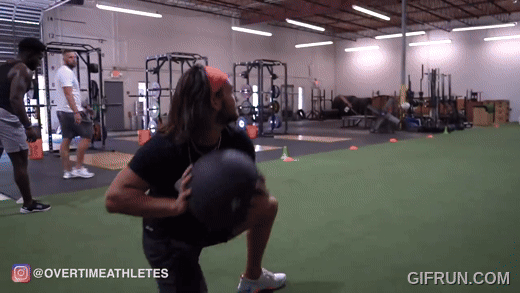Maximizing Performance and Injury Prevention: The Importance of In-Season Training for Baseball Players
In-season training is crucial for baseball players because it plays a pivotal role in maintaining performance, preventing injuries, and ensuring the player’s body stays prepared for the demands of the sport. During the season, the emphasis shifts from building raw strength and power to maintaining a functional level of fitness while preventing fatigue and injury. Here’s a breakdown of why in-season training is vital, focusing on factors like mobility, stability, flexibility, injury prevention, and maintenance:
1. Mobility
- Why it’s important: Baseball players perform complex, multi-joint movements throughout a game, including pitching, swinging, fielding, and running. Maintaining proper joint mobility, especially in the hips, shoulders, and ankles, is essential for fluid movement and optimal performance. Lack of mobility can restrict range of motion, decrease efficiency, and lead to overcompensation or improper mechanics, potentially causing injury.
- In-season mobility exercises:
- Hip Flexor Stretch: Tight hip flexors are common in baseball players due to repeated movements like pitching and sprinting. Stretching the hip flexors maintains flexibility and helps prevent lower back pain.
- Shoulder Dislocates (with a band or broomstick): This improves shoulder mobility, critical for pitchers, catchers, and hitters who rely heavily on shoulder rotation.
- Thoracic Spine Rotation: This exercise improves upper back mobility, critical for rotational movements involved in pitching and hitting.

2. Stability
- Why it’s important: Stability in key areas like the core, shoulders, and lower body is crucial for controlling movement and transferring force efficiently. Stability allows players to perform explosive movements (e.g., hitting a ball, sprinting, or throwing) without compensating with inefficient mechanics that increase the risk of injury.
- In-season stability exercises:
- Plank Variations: Front planks, side planks, and plank reaches strengthen the core, helping maintain posture and control during dynamic movements.
- Single-leg Balance Drills: Exercises like single-leg Romanian deadlifts or balancing on a stability ball are great for lower body and ankle stability, helping players maintain control when running or fielding.
- BOSU Ball Push-ups: These challenge shoulder stability, which is important for throwing, especially for pitchers, who place a lot of stress on their shoulders.

3. Flexibility
- Why it’s important: Flexibility directly affects a player’s range of motion and ability to perform quick, powerful movements without injury. In baseball, flexibility helps with the long, dynamic strides required for running, the rotational movements during a swing, and the overhead motions in pitching and throwing.
- In-season flexibility exercises:
- Dynamic Warm-ups: Dynamic stretches like leg swings, arm circles, and hip openers are excellent for warming up muscles and increasing flexibility before practice or a game.
- Static Stretching Post-Game: After games or practices, static stretching (e.g., hamstring stretches, quadriceps stretches) helps to improve flexibility and decrease muscle tightness from repetitive motions like throwing or swinging.
- Piriformis Stretch: For athletes who spend a lot of time in a seated position or who are engaging in explosive lower body movements, stretching the piriformis muscle can reduce the risk of lower back and hip issues.

4. Injury Prevention
- Why it’s important: Baseball is a sport with a high risk of overuse injuries, especially in the shoulder, elbow, and lower body. In-season training helps prevent these injuries by promoting muscle balance, maintaining joint health, and reducing accumulated fatigue.
- Injury prevention exercises:
- Rotator Cuff Strengthening: Performing external rotation exercises using resistance bands or light dumbbells strengthens the rotator cuff muscles and supports shoulder stability, which is critical for pitchers and fielders.
- Foam Rolling: Regular foam rolling of key muscle groups (quads, hamstrings, IT band, calves) improves muscle pliability and helps reduce muscle tightness, minimizing the risk of strains and sprains.
- Ankle Mobilization and Strengthening: Ankle injuries are common in baseball players, especially during sudden changes of direction. Exercises like ankle circles, toe raises, and lateral band walks strengthen the ankle joint and improve its range of motion, reducing the likelihood of sprains.

5. Maintenance of Strength and Power
- Why it’s important: While the intensity of strength training typically decreases during the in-season, it’s still important to maintain muscle mass, strength, and power so that performance doesn’t decline over the course of the season. Maintenance ensures that players can continue producing high levels of force while reducing the risk of injury due to muscle imbalances or fatigue.
- In-season strength maintenance exercises:
- Medicine Ball Throws: These explosive movements mimic the rotational power needed for hitting and throwing. Medicine ball slams, rotational throws, and chest passes maintain power in a functional way without overloading the body.
- Trap Bar Deadlifts: A safer alternative to traditional deadlifts, the trap bar deadlift allows players to maintain lower body strength and power without stressing the back excessively, which is important for hitting and sprinting mechanics.
- Push-ups and Pull-ups: These bodyweight exercises are fantastic for maintaining upper body strength, which is vital for baseball movements like swinging, throwing, and fielding.

Conclusion:
In-season training for baseball players is essential for maintaining performance, reducing injury risk, and promoting longevity in the sport. By emphasizing mobility, stability, flexibility, injury prevention, and maintenance of strength and power, players can sustain their performance through the grueling demands of the season. Exercises like dynamic stretches, rotator cuff strengthening, core stability work, and explosive power training should be incorporated into their routine. These exercises not only enhance baseball-specific movements but also keep the body in optimal condition, ensuring players stay healthy and perform at their best all season long!
